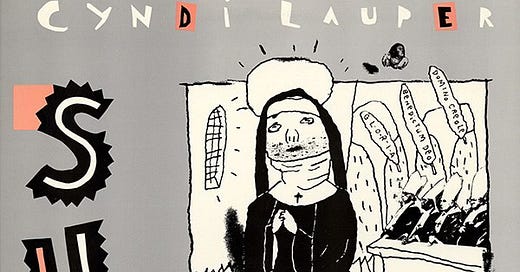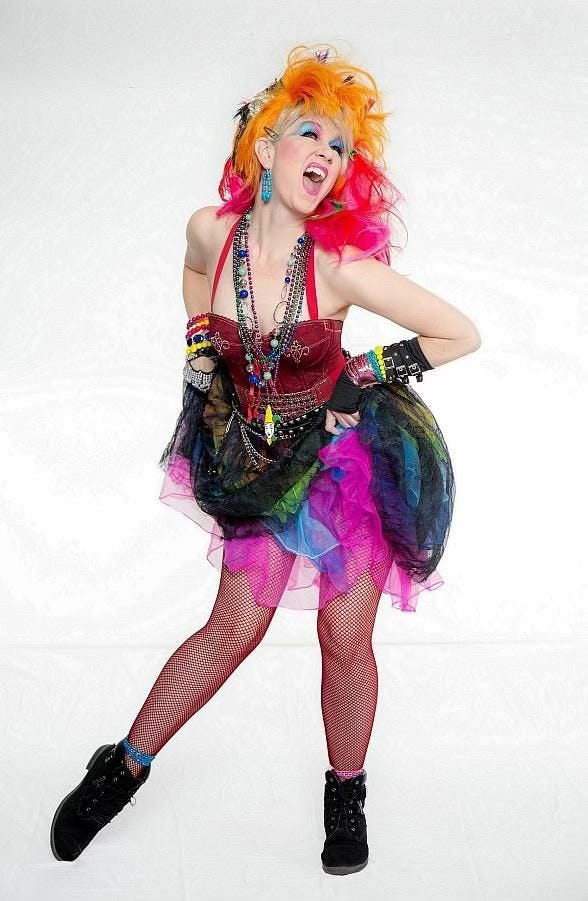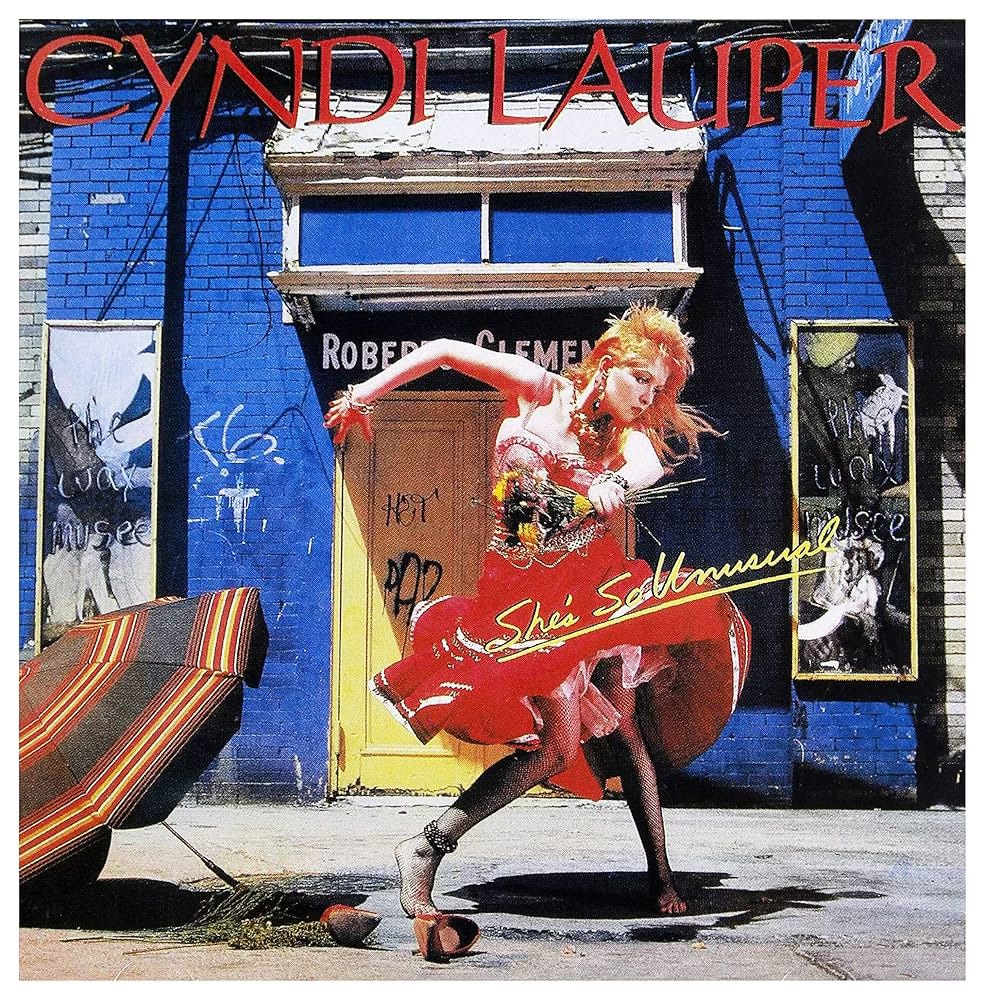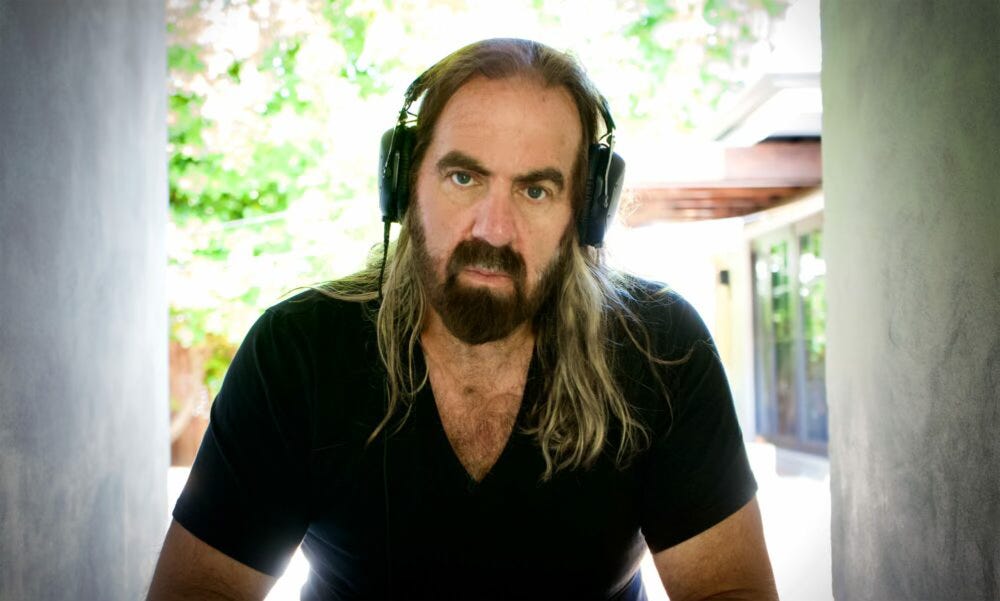🎧 “She Bop” & Cyndi Lauper: How one neon-haired "Misfit" shook up 1984 with a Beat, a Wink, and a Song about Masturbation.
The Twelve Inch 169 : She Bop (Cindy Lauper)
In the summer of 1984, a fizzy synth-pop banger burst out of American radios with a hook that practically dared you not to dance. But listen a little closer, and “She Bop” was doing more than filling the floor, it was flipping a very public middle finger to the moral panic brewing in Washington, which made it end up on a government watchlist.
But how did we get there? Who was Cyndi Lauper before she shocked Reagan’s America? And what did a brash New Yorker and a Boston electro-funk wizard like Arthur Baker have in common?
Let’s “Bop In” and start at the beginning.
Welcome, I’m Pe Dupre and I’m really glad you’re here. This is “The Twelve Inch”, my newsletter that tells the history of dance music between 1975 and 1995, one twelve inch at a time.
If you’ve received this newsletter, then you either subscribed or someone forwarded it to you. If you fit into the latter and want to subscribe, please do so. That way you will not miss any of my weekly episodes.
👩🎤 Who Is Cyndi Lauper?
How do you describe Cyndi Lauper?
Start with a thick “Nooo Yawk” accent, mix in some Bettie Boop and Gracie Allen, wrap it all in a punky, New Wave thrift-shop look, and you’re getting close.
Before she became the first woman ever to land four top-5 singles from a debut album, Lauper was a “misfit” kid from Queens with a voice that didn’t fit any mold. And that’s exactly why it worked.
Born in 1953 into a working-class Italian-American family, Cynthia Ann Stephanie Lauper grew up on girl groups, The Beatles, and early rock & roll. She left home at 17, drifted through day jobs, and sang in cover bands. In 1979, she formed the short-lived new wave band Blue Angel. The band put out one album, flopped, and got dropped. The band broke up—but Cyndi didn’t. She got louder, sharper, and more determined.
💿 The Road to “She Bop”
After Blue Angel fell apart, Lauper was broke, waiting tables, and dealing with damaged vocal cords. Then came David Wolff, a music manager who became her biggest supporter (and for a while, her boyfriend). He helped her sign with Portrait Records, a CBS imprint, and brought in producer Rick Chertoff to shape what would become her 1983 debut: She’s So Unusual.
The album mixed punchy new wave, offbeat pop, and those unmistakable vocals. It didn’t just sell, it exploded. With “Girls Just Want to Have Fun,” “Time After Time,” and “All Through the Night,” Cyndi became a fearless, feminist, fashion-forward icon.
But track four on side A?
That one hit different. That one bopped.
💥 “She Bop”: A Pop Song About Masturbation?
Yes, She Bop is about masturbation, and Cyndi didn’t exactly try to keep it subtle.
So how did the song come about? Her manager, David Wolff, knew songwriter Stephen Lunt from his days in the ‘70s UK rock band City Boy. “So he calls me, and I think he had a few beers. And he said, sin, I got this song about masturbation, and you should do it because it's a big thing. Women don't talk about this. And I said, alright, you got a point there”
Before recording, Cyndi stopped by a local newsstand to pick up a few “inspirational” magazines. “There was nothing in the magazine shop except Blue Boy I figured, well, what? They look like they're supposed to be beefcakes. I don't know. Let's take that. So I took that title. And I found out it was like a gay magazine, but what the fuck? All my friends loved it”.
The recording took place in a different room of the studio, one that Kiss used for rehearsals. Cyndi wanted to record the vocals alone, without anyone watching. “I did take my shirt off because nobody could see me. And I was singing She Bop and the reason I was laughing was because I actually tickled myself and thought it was the stupidest. Just, you know, And they left it in. And then after a while, everybody was laughing on their records so I started to think, wow, is everybody naked?”
In 1984, a woman writing a playful, upbeat song about self-pleasure was nothing short of radical. But Cyndi wasn’t out to shock just for attention. She was pushing back against the shame and double standards around female sexuality, doing it with a wink and a killer bassline.
Bonus detail: in the video, there’s a quick shot of her getting an eye exam, a cheeky nod to the old myth that masturbation makes you go blind. 😎
🎧 Arthur Baker Enters the Mix
“She Bop” was already pushing boundaries with its lyrics, but the 12-inch remix took it even deeper into club territory. That’s where Arthur Baker came in. The Boston-born producer and remixer was a major force in blending electro-funk, early hip-hop, and pop, and he gave She Bop a bold new edge for the dancefloor.
At the time, Baker wasn’t yet a go-to name for pop remixes. That changed when he was tapped to create club versions of Cyndi Lauper’s breakout hit, Girls Just Want to Have Fun. It marked a turning point in his career, and a crossover moment for pop on the dancefloor. “I never realised how important my remix of ‘Girls Just Want to Have Fun’ was to my career until I started looking back for this book. It’s not one I ever really think or talk about, but it was actually the first remix I was hired to do after hitting with my five big productions of ‘Planet Rock’, ‘Play at Your Own Risk’, ‘Walking on Sunshine’, ‘I.O.U.’ and ‘Confusion’.”
Jellybean had already made a twelve inch version of “Girls Want To Have Fun” but the record company wasn’t pleased and asked Arthur Baker to make a new mix. “There were even false rumours at the label that he had sabotaged it, as he was going out with Madonna at the time and maybe didn’t want any competition for her”
The success of the single, and its 12-inch remix, led to Arthur Baker being brought back to rework the third release, She Bop. Unusually, Cyndi was in the studio while he did the remixing. In his biography, Baker shares a story about what happened when they stepped out for a quick bite during the session: “When we took a dinner break at an Italian restaurant close by on Newbury Street, I witnessed the power of Cyndi’s new-found fame. ‘Girls’ had been one of the top records of the past year, and her video was everywhere. Not surprisingly, there were fans lined up all the way through the restaurant to our table, patiently waiting to say hello and get her autograph”
The exciting mixes put Baker's name on the lips of tastemakers, particularly at CBS Records. "[Cyndi] brought me to the attention of an A&R guy who's a friend of mine" Baker explained. "He had been a music journalist and radio DJ who lived in Boston. He heard my Cyndi mix and he spoke to Jon Landau [Springsteen's manager] about me potentially doing a mix on 'Dancing in the Dark.'" (the rest of that story you’ll read in episode 122 on Bruce Springsteen and “Dancing In The Dark”)
🚫 The “Filthy Fifteen,” and the Wrath of Tipper Gore
“She Bop” didn’t just earn dancefloor love, it also caught the attention of Tipper Gore and the newly formed Parents Music Resource Center (PMRC).
They definitely seem interested; and dressed for the occasion too. 😁
After catching her daughter listening to Prince’s “Darling Nikki,” Tipper Gore teamed up with other Washington insiders’ wives to launch the Parents Music Resource Center (PMRC) in 1985. Their mission: protect kids from “explicit” content in pop music. It didn’t exactly go as planned.
Backed by funding from Coors Beer, and oddly enough, Mike Love of the Beach Boys, the PMRC pushed for the music industry to adopt a rating system, like the one used for movies. They also called for lyrics to be printed on album covers, explicit records to be kept behind the counter (a personal favorite 😂), and TV stations to stop airing provocative songs and videos. They even suggested reconsidering record deals for artists who were too sexual or violent on stage, and proposed forming a panel to set industry standards.
The result? Those familiar Parental Advisory stickers, and a list of “problematic” tracks they dubbed the Filthy Fifteen.
“She Bop” made the list, of course. And to refresh your memory the full list of songs to avoid 😁👊:
🧼 The Full Filthy Fifteen List:
Prince – Darling Nikki (Sex)
Sheena Easton – Sugar Walls (Sex)
Judas Priest – Eat Me Alive (Sex)
Vanity – Strap On Robbie Baby (Sex)
Motley Crue – Bastard (Violence)
AC/DC – Let Me Put My Love Into You (Sex)
Twisted Sister – We’re Not Gonna Take It (Violence)
Madonna – Dress You Up (Sex)
W.A.S.P. – Animal (F* Like a Beast)** (Sex)
Def Leppard – High 'n' Dry (Drug/alcohol)
Mercyful Fate – Into the Coven (Occult)
Black Sabbath – Trashed (Drug/alcohol)
Mary Jane Girls – In My House (Sex)
Venom – Possessed (Occult)
Cyndi Lauper – She Bop (Sexuality)
Cyndi didn’t mind. In 1987 she told the audience of one of her Paris concerts jokingly: "It was scandal. I brought shame upon my family. I was accused of driving in the fast lane …. But anyway, the thing I thought of, I said, 'A bop a day keeps the doctor away,' and that's absolutely true. So I recommend it." 😂
🏷️ The Fallout: Warning Labels and Backlash
She Bop was never pulled from stores, but it became part of a much bigger conversation, about censorship, artistic freedom, and the politics of pop music.
Ironically, the controversy only raised Cyndi’s profile. By 1984–85, she had become an unexpected feminist icon: a woman singing openly about pleasure, breaking taboos, and still climbing the charts.
📺 MTV, Dance Pop, and the Remix Era
MTV’s launch in 1981 fundamentally transformed the music industry by elevating the music video from a promotional afterthought to a central element of pop music marketing and artistry. This shift had a direct impact on both the production and sound of dance pop singles in the mid-1980s:
Visual-Driven Production: With music videos now a primary vehicle for reaching audiences, artists and producers began crafting songs with strong visual hooks in mind. The sound became brighter, catchier, and more immediate, designed to complement bold, memorable visuals.
Synthesizer and Drum Machine Emphasis: The dance pop genre increasingly relied on synthesizers, sequencers, and drum machines, producing a polished, electronic sound that translated well to the high-energy, colorful aesthetic favored by MTV.
Short, Punchy Arrangements: Singles were often structured for maximum impact within the three-to-four-minute format of a typical music video, emphasizing memorable choruses and danceable rhythms.
Fashion and Persona: Artists’ visual personas became as important as their music, influencing everything from vocal delivery to production choices. Theatricality and flamboyance—already present in the New Romantic and synth-pop scenes—were amplified for MTV’s visual medium.
MTV’s influence helped propel artists like Madonna, Michael Jackson, and Cyndi Lauper to superstardom, as their music and videos became cultural touchstones.
📈 Chart Impact
“She Bop” peaked at #3 on the Billboard Hot 100, stayed in the Top 40 for 13 weeks, and was a Top 10 hit in Canada and Australia. It hit #1 on the US Hot Dance/Disco chart, driven by Arthur Baker’s remix and heavy club rotation.
It proved that a song could be playful, subversive, and still wildly successful.
🌈 What Happened After “She Bop”?
Cyndi Lauper’s follow-up album, True Colors (1986), took a more serious turn. It delivered hits but didn’t quite capture the same magic as her debut. Still, she kept moving forward, taking on film and Broadway roles, becoming a fierce LGBTQ+ advocate, and later winning a Tony Award for composing the score to Kinky Boots.
Over the years, she’s released 11 albums, more than 40 singles, and sold over 50 million records worldwide.
But above all, Cyndi stayed true to herself, an artist who always followed her own path, even when it wasn’t the obvious one. “Cause I don't like to be a puppet. Right? You sing to be free, not to be a little caged bird, right? I mean, that's why it took me so long I never took the opportunities that came because I wanted a have my own head. You know, And even after she's so unusual, people would say, Why don't you just shut up and sing and let somebody else tell you what to do? And I would say, okay, when I get that lobotomy, I'm gonna get right back to you” 👊😁
💬 What About You?
Were you blasting “She Bop” in your bedroom in 1984? Did you dance to the Arthur Baker remix in a neon-lit club? Or maybe you just remember the sticker on the record sleeve?
👉 Hit reply, share your story, or leave a comment.
What are your memories of this cheeky little revolution?
And don’t forget—subscribers get access to deeper dives and rare bonus tracks each week.
Further reading (or should I say watching)
There are a number of interesting video’s/links :
So You Wanna Hear More ?
I thought you would !
It’s fun to write about music but let’s be honest. Music is made to listen to.
Every week, together with this newsletter, I release a 1 hour beatmix on Mixcloud and Soundcloud. I start with the discussed twelve inch and follow up with 10/15 songs from the same timeframe/genre. The ideal soundtrack for…. Well whatever you like to do when you listen to dance music.
Listen to the Soundtrack of this week’s post on MIXCLOUD
Or on Youtube :
So what’s in this week’s mix ?
Mid-eighties dance-pop takes center stage in this week’s set, but I’ve added a generous dose of synth-funk to round it out. It’s a great reminder of how pop and dance-funk constantly borrowed from and inspired each other during that era.
We open with Arthur Baker’s stellar remix of Cyndi Lauper’s “She-Bop,” followed by Jane Wiedlin’s sparkling “Blue Kiss” and “Jackie” by Lisa Stansfield’s early band, Blue Zone.
The middle stretch dives into synth-funk territory with Zenobia (another Arthur Baker production) and two cuts from Rick James. First up is “Can’t Stop,” one of the follow-ups to “Glow,” followed by the unforgettable “Party All the Time”, technically an Eddie Murphy track, but unmistakably a Rick James production in sound and spirit.
There’s room too for some European dance-pop flair, with Bronski Beat’s “Why,” The Associates, and Culture Club adding their own distinctive touch. And the finale? A European trio again: ex-Guys & Dolls & Dollar singer Thereza Bazar with “The Big Kiss” (remixed by Arif Mardin, a brilliant producer, but maybe not born to remix 😄), Falco’s “Vienna Calling,” and Go West’s anthemic “We Close Our Eyes.”
Enjoy
What do you remember of the disco phenomenon known as Charo?If your answer is “Who?”, don’t worry, I’ve got you covered. Next week’s episode dives into one of the most entertaining (and unexpected) novelty acts of the disco era.














I would never describe myself as someone who could 'pick hits' in advance, but when "She's So Unusual" came out, I was working in the record store and one early morning going through a stack of mail I opened an LP mailer with a promo copy in it. I was alone in the store and just on the basis of the cover - I had NO idea of who Cyndi was, I hadn't read any advance hype or anything - I put on the LP and *cranked it up*.
I was pretty much blown away, thinking, "if this record isn't a hit there ain't no justice in the world."
So I got that one right, anyway!
I didn't know this backstory, so this has been very educational and fun. I need to listen to that album more closely. Thanks for such a great post!